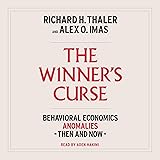In a dynamic investment landscape where traditional benchmarks like the S&P 500 have faced headwinds, astute investors are constantly searching for sectors poised for significant growth. The accompanying video offers a compelling analysis, highlighting how specific gold-backed exchange-traded funds (ETFs) have delivered exceptional returns, quietly outpacing broader markets. While gold reaching record highs might suggest the boat has sailed, a deeper dive reveals that September 2025 could be a pivotal moment, presenting an explosive opportunity for those strategically positioned in gold investments.
This comprehensive guide expands on the video’s insights, delving into the factors driving this gold resurgence and examining the distinct advantages of various gold ETFs. Understanding the interplay of market forces, central bank policies, and the unique leverage offered by gold mining companies is crucial for any investor looking to capitalize on the precious metals supercycle that appears to be unfolding. We will explore how these elements combine to create a perfect storm for gold, offering a detailed look at the investment vehicles that could define your portfolio’s performance in the coming months.
The Golden Opportunity: Beyond Physical Gold with Gold Mining ETFs
Gold’s journey this year has been nothing short of remarkable, surging past the $3,500 per ounce mark, a level many analysts deemed unattainable just half a year prior. This impressive rally, seeing gold gain an impressive 35% year-to-date, underscores its enduring appeal as a safe-haven asset and a store of value. However, as the video astutely points out, the truly staggering gains aren’t necessarily found in direct physical gold ownership alone. Instead, the real wealth accumulation often occurs within the companies responsible for extracting this precious metal from the earth.
This phenomenon is largely attributed to what is known as ‘operational leverage.’ Imagine a gold mining company with fixed costs for machinery, labor, and operations. When the price of gold rises, their revenue per ounce increases dramatically, while their costs remain relatively stable. This means that a small increase in the price of gold can lead to a disproportionately large surge in the mining company’s profits and, consequently, its stock valuation. For instance, if gold moves up $100, mining stocks, especially those in the junior sector, can sometimes climb by $1,000 or more, demonstrating the amplified returns possible through these specialized investments. This leverage is why certain gold mining ETFs have not just matched but significantly exceeded gold’s 35% gain, delivering returns exceeding 90% in less than nine months.
Catalysts for a Gold Supercycle in September 2025
The current environment for gold investments is being shaped by a confluence of powerful factors, creating what many refer to as a “perfect storm.” These catalysts are converging to establish one of the most favorable outlooks for precious metals in over a decade, signaling a potential multi-year supercycle rather than a short-term rally. Understanding these drivers is essential for comprehending the gold market’s trajectory.
Federal Reserve’s Interest Rate Policy
A significant driver for gold’s appeal is the anticipated shift in Federal Reserve policy. With the Federal Reserve poised to cut interest rates on September 16th and 17th, the market is bracing for a pivotal change from the persistent 5.25% to 5.50% interest rate range seen throughout 2025. The CME FedWatch tool, a key indicator, shows a robust 90% probability of at least a 25 basis point cut. When interest rates decline, non-yielding assets like gold become inherently more attractive compared to interest-bearing alternatives such as cash and bonds, reducing the opportunity cost of holding gold and boosting investor demand.
Weakening US Dollar & Geopolitical Tensions
The US dollar’s recent weakening, evidenced by a 2.2% depreciation over the past month, makes gold more affordable for international investors. This directly fuels demand from overseas buyers, further pushing up prices. Simultaneously, persistent geopolitical tensions globally, coupled with ongoing trade tariff uncertainties, consistently elevate gold’s status as a safe-haven asset. In times of economic and political instability, investors traditionally flock to gold, seeking refuge from market volatility and currency depreciation. These factors collectively create a foundation of sustained demand.
Seasonal Demand, Central Bank Accumulation & Technical Breakouts
Beyond monetary policy and global events, seasonal consumption patterns also play a role. We are entering periods of traditionally strong gold demand, particularly in Asian markets where festival seasons drive significant physical gold purchases. Concurrently, central banks worldwide have maintained a steady strategy of gold accumulation, providing a structural demand floor that transcends typical investment flows. From a technical perspective, gold has decisively broken through multiple resistance levels, doing so with substantial trading volume. This technical breakout generates momentum, attracting trend-following investors and automated trading systems, adding further impetus to its upward movement.
Diving Deep into Top Gold ETFs
For investors considering exposure to gold, the choice of ETF can significantly impact both potential returns and risk profile. The video highlighted three distinct ETFs, each offering a unique approach to benefiting from rising gold prices. Let’s delve deeper into their characteristics and why they’ve garnered such attention.
VanEck Junior Gold Miners ETF (GDXJ): High-Octane Growth Potential
The VanEck Junior Gold Miners ETF, trading under the ticker GDXJ, has delivered an astonishing 93.99% return year-to-date, almost doubling investors’ money in under nine months. GDXJ focuses on small-capitalization companies involved in gold and silver mining, which are known for their heightened sensitivity to gold price movements. These junior miners often have a smaller scale of operations and more sensitive cost structures, meaning that even modest increases in gold prices can lead to an explosion in their profitability. Currently, the fund holds 88 individual securities, with notable top holdings including Alamos Gold, Pan American Silver, and B2Gold Corporation. It manages $6.87 billion in assets and charges a reasonable 0.51% expense ratio, alongside a 1.35% dividend yield, offering income while capital appreciation accrues. Many of these junior mining companies are now in the early stages of a multi-year expansion, ramping up production and developing new projects after conservative spending during periods of lower gold prices, making their operational leverage particularly potent in the current bullish environment.
VanEck Gold Miners ETF (GDX): Stability Meets Significant Upside
Matching the impressive performance of its junior counterpart, the VanEck Gold Miners ETF (GDX) has delivered a 91.14% year-to-date return, offering substantial upside with a comparatively more stable profile. GDX targets established, large-capitalization gold mining companies known for their proven track records and diversified global operations. Its holdings include industry titans such as Newmont Corporation, Agnico Eagle Mines, and Barrick Gold Corporation. With 66 securities and $19.52 billion in assets under management, GDX is one of the world’s largest gold mining ETFs. Its top 10 holdings represent 65.84% of total assets, providing concentrated exposure to well-managed companies with geographic diversification across key mining regions like Canada, the United States, Australia, Brazil, and South Africa. This diversification helps mitigate single-country political and operational risks. These are not speculative plays; they are seasoned operators like Newmont (13.47% of the fund), the world’s largest gold mining company, and Agnico Eagle Mines (11.80%), boasting over 60 years of profitable operations. GDX also provides a dividend yield of 0.90%, offering an income component on top of its capital appreciation. It’s worth noting that GDX underwent significant changes to its benchmark index and investment strategy after September 19th, 2025, specifically to better capture prevailing opportunities in the gold market.
SPDR Gold Shares ETF (GLD): The Foundation of Physical Gold
For investors prioritizing direct gold exposure without the operational risks inherent in mining companies, the SPDR Gold Shares ETF (GLD) is a prominent choice. While its 26.96% year-to-date return might seem modest next to the mining ETFs, it directly reflects the baseline performance of physical gold itself. GLD is the largest gold ETF globally, boasting over $107 billion in assets under management. Its core appeal lies in its simplicity: the fund holds physical gold bullion, stored securely in vaults managed by institutions like HSBC Bank and JPMorgan Chase Bank. This means investors are indirectly owning actual 99.99% pure gold bars. The fund tracks the LBMA Gold Price PM and has a very competitive expense ratio of just 0.40%. Unlike mining ETFs, GLD does not pay dividends as physical gold does not generate income. It also avoids the specific risks associated with mining operations, such as equipment failures, labor disputes, permitting delays, or regional political instability. A key consideration, however, is its tax treatment: the IRS classifies GLD as a collectible, meaning long-term capital gains are subject to a maximum 28% tax rate, higher than the typical 20% for most securities. This factor should be weighed within a broader investment strategy but should not overshadow the fundamental benefits of direct gold ownership.
Strategic Allocation: Tailoring Your Gold ETF Investment
With three distinct gold ETFs offering varied risk-reward profiles, constructing a strategic allocation is paramount to align with individual risk tolerance and investment objectives. The video outlined practical strategies for different investor types, and re-emphasizing these approaches is vital for making informed decisions.
Allocation Strategies for Gold ETFs
For conservative investors seeking exposure to gold with minimal volatility, a balanced allocation of 70% to GLD and 30% to GDX is often recommended. This strategy leverages the stability of physical gold while gaining some exposure to the leveraged upside offered by established mining companies, promoting a more tranquil investment experience while still participating in the gold rally. Balanced investors, aiming for optimal risk-adjusted returns, might consider a 40% allocation to GLD, 40% to GDX, and 20% to GDXJ. This diversified approach combines the foundational stability of physical gold, the significant upside of established miners, and a strategic touch of high-leverage potential from junior miners, potentially representing the sweet spot for many. Aggressive investors, on the other hand, looking for maximum leverage to gold price movements, could opt for a 30% allocation to GLD, 35% to GDX, and 35% to GDXJ. This strategy maximizes exposure to the operational leverage of mining companies, with a foundational physical gold component, though it requires a higher tolerance for volatility.
Regardless of the chosen allocation, employing a dollar-cost averaging strategy for entries is highly advisable. Gold and mining stocks, even during strong uptrends, can exhibit short-term volatility. Spreading purchases over several weeks or months mitigates the risk of buying at a temporary peak, smoothing out the average purchase price and enhancing long-term potential.
Understanding the Risks: A Balanced Perspective
While the opportunities in gold ETFs, especially gold mining ETFs, are compelling, a clear understanding of the associated risks is crucial. These are not low-volatility, broad market index funds; they can experience significant price swings that might make some investors uncomfortable.
The inherent volatility of gold ETFs, particularly those focused on mining, is a key consideration. GDXJ, for example, can exhibit daily movements of 5% to 10% during periods of high market volatility. Mining companies also face specific operational risks that physical gold does not. These include potential equipment breakdowns, difficulties in securing or maintaining permits, changes in environmental regulations that can halt operations, unexpected spikes in labor costs, and even political instability or nationalization risks in certain operating regions. Although major companies in GDX often mitigate these through diversification and political risk insurance, the risks remain present.
Furthermore, currency exposure is another factor. Many mining companies within GDX and GDXJ operate internationally, meaning their revenues and costs are influenced by foreign exchange fluctuations. A strengthening US dollar, for instance, could negatively impact their profitability even if gold prices remain stable. In broader market crashes, it is also important to remember that most assets, including gold, can initially decline together before gold’s safe-haven properties typically reassert themselves as panic subsides. While these ETFs offer global diversification, significant exposure to specific regions can still leave them vulnerable to localized political or economic instability. Therefore, a comprehensive understanding of these risks is essential for a well-informed investment decision.
The convergence of Federal Reserve policy shifts, strong technical breakouts, robust seasonal demand, and persistent geopolitical uncertainties has created one of the most compelling investment opportunities in the precious metals space in over a decade. The video above further elaborates on the urgency and specifics of this opportunity, emphasizing how strategic positioning in gold ETFs, particularly gold mining ETFs, before September 2025 could yield substantial benefits. This potential for a multi-year supercycle in precious metals presents a unique moment for investors to assess and adjust their portfolios.











